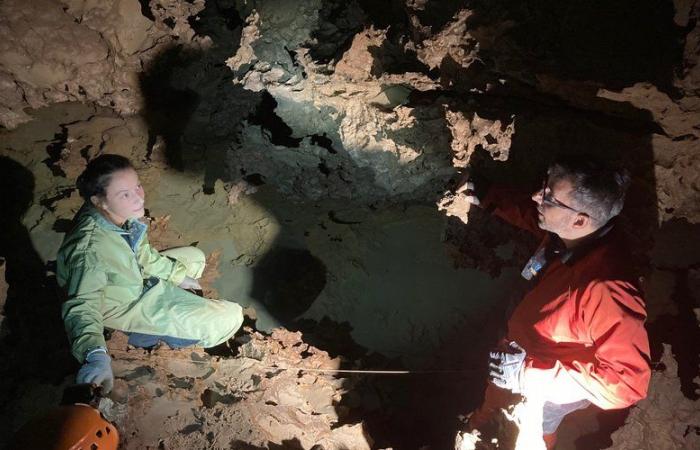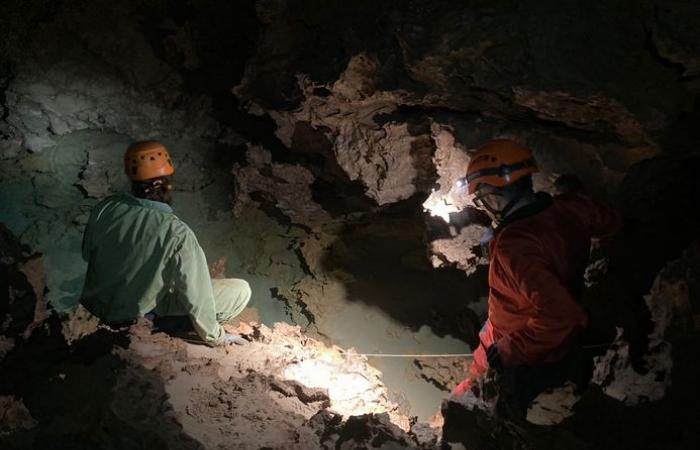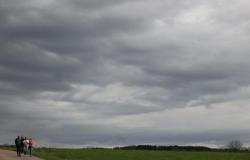After very dry months in 2023, the winter of 2023-2024 was marked by regular rainy episodes. Have they made it possible to fill, even if only a little, the water deficit in Hérault? Dive into the depths of the Clamouse cave, in Saint-Jean-de-Fos, to see how the underground water reserves are doing.
Suits and gloves on, helmets attached. After a few steps on the tourist trail, the expedition into the depths of the Clamouse cave, in the Hérault gorges, in Saint-Jean-de-Fos, begins, by the light of headlamps alone, at the end of September 2024.
A journey that is both fabulous and impressive for a novice, slipping into the skin of an explorer for a few hours, 1 hour 30 minutes of descent, a little less to find the light. Today’s mission, with Sandro Casagrande, technical director of the site and Charline Morin, natural risks engineer, as guides: reach the underground river, 120 meters below, and observe its water level.
Sports course, unique decor
Climb, climb, slide a little on your buttocks, squeeze through a narrow gallery, cross a hole, get out of the siphon – this space where it is better not to be during heavy precipitation – the course is sporty, the decor, unique.
Calcite crystals, stalactites, stalagmites, the landscapes are revealed, magnificent, and feel within reach. As you descend, the sensations change. Underfoot, the ground is sometimes slippery, sometimes sandy or even fragile and brittle.
Calm and translucent
When we almost no longer expected it, caught up in the effort, concentrated in each movement, the expedition reached its goal. The water is there. Not a huge river, no, more like a very small lake. Calm and translucent. After the effort, the water seems so clear and pure that you would want to slowly slide into it. Before knowing that it is only 12°C.
SANDRO CASAGRANDE – CLAMOUSE CAVES
“I’m not unpleasantly surprised”. 120 meters underground, Sandro Casagrande, technical director of the Clamouse cave, looks at the cord which serves as a mark for the water level. “The water is lower, 1.20 meters less compared to June 2023”.
“On the surface, things are better”
Charline Morin, natural risks engineer, co-founder of Senso Terrae, confirms: “There has been more rain lately so, on the surface, things are better. But this water was just used for the vegetation. Underground, the level is much lower than in previous years, the recharge has not not done enough”.
Only six years ago, no one had ever come to this cave. Except for one and only person: the speleologist Franck Vasseur who went down there but… with diving tanks.
LAURIE ZENON – Midi Libre
“Alarming situation”
“We have the illusion that things are getting better. But it’s short term, deplores the one who has seen the cave evolve closely for 14 years. The rains were good for the vegetation at the time but were far from being abundant and regular enough to recharge water reserves. We had a water overdraft of 6 years. Thanks to the rains, we covered 2 years while losing a year due to human activity. In reality, the water debt is accumulating and the situation is still alarming.”
After months of drought, the situation of groundwater remains precarious and even dramatic in certain French regions, as highlighted by La Chaîne Météo, cited by Le Figaro. If the winter of 2023-2024 shows an excess of rain of 12% on average in France, the entire Languedoc-Roussillon region and the Pyrénées-Orientales are recording their third winter with a significant deficit.
ud83dudca6Notre #winter weather forecast 2023-2024 which ended on February 29 was well rained over 3/4 of the country. This is a good thing since it is this time of year that our water tables recharge. We nevertheless note a #drought persistent and worrying on the… pic.twitter.com/ULOLW0sY6R
— La Chaîne Météo (@lachainemeteo) https://twitter.com/lachainemeteo/status/1763573335286304902?ref_src=twsrc%5Etfw
What consequences?
Concretely, if the water continues to fall, what could happen? “The weakening of water reserves can cause subsidence, collapse in the cave, explains the natural risks expert. This will also have an impact on life, on the entire underground ecosystem. The species and fauna that thrive here need this water. Outside, having less water will cause a change in the local fauna and flora, and respiratory diseases.”
“Everything is starting to be rethought”
Types of crops and agriculture will be called into question. “This is also what is happening in Bordeaux, continues Charline Morin. The aridification of the land leads them to wonder if it would not be better to grow olives rather than wine. Everything is starting to be rethought.”
Tourism included. The Clamouse cave has chosen to limit summer attendance to 900 visitors per day, as during Covid. “Thanks to this measure, we have been consuming less water for 4 years. Water from air conditioners is also recovered to wash the floors, and water from the dishwasher to water the plants”illustrates the technical director.
Des solutions ?
Faced with this sad observation, Charline Morin, the natural risks engineer, wants to remain positive. Solutions exist. “Everyone can find how to act on their own scale. If we all save 3 liters of water per day, while showering for example, multiplied by the number of French people, that’s a lot. It’s too late to change reality but we have the power to consume differently, to readjust ourselves without seeing it as a constraint.”







